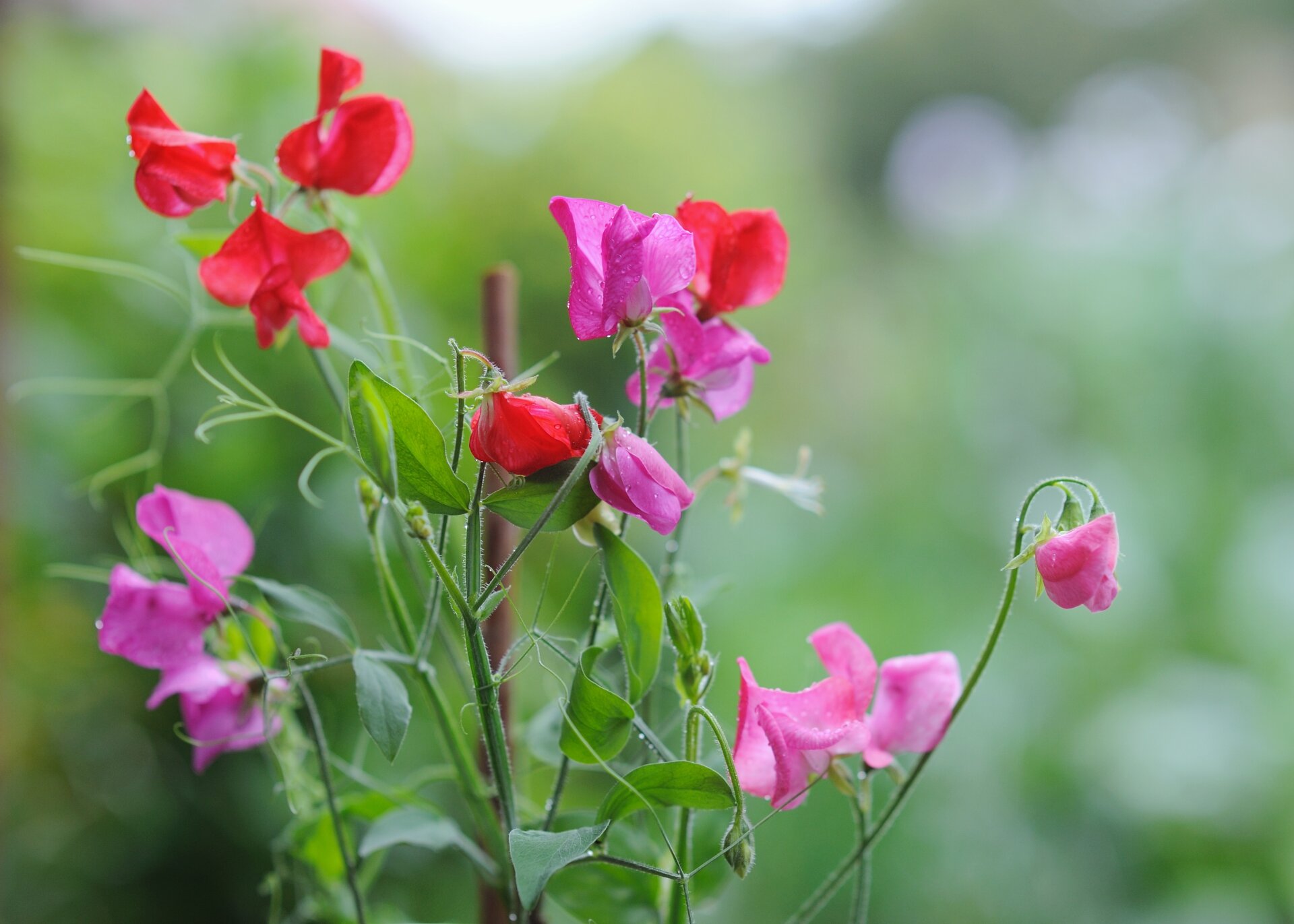April Birth Flowers: Sweet Pea and Daisy
Daisy
Meaning: The daisy symbolizes innocence and purity. There may be a reason the phrase “running through a field of daisies” represents something beautiful and pure, and that photographers and cinematic directors often feature their subjects in grassy fields sprinkled with daisies. In fact, poet Walter de la Mare wrote that the daisy “makes a skylark of every heart.” In the Victorian language of flowers the daisy represented the loyalty of a secret keeper. The daisy is found in shades of whites and pale pinks and almost always features a yellow center.
Name Origin: In Old English, ‘daisy’ stems from ‘day’s eye’ and, in fact, had a similar name in other cultures because the daisy closes her petals around her yellow ‘eye’ at night and unfolds them again in the morning.
The “eye” of the daisy flower
History: The daisy is thought to be 4,000 years old. We have random tidbits of the legends and uses of the daisy over history, starting with the Greeks, whose lore said that the daisy’s origin began as a sisterhood of wood nymphs who disguised themselves as daisies in an attempt to conceal themselves from a ruthlessly passionate would-be-lover. (Not unlike other myths we’ve read about birth flowers in this series, is it?)
The Assyrians mixed the daisy juice with oils in an attempt to die their hair, and during the Roman empire, the soldiers would arm themselves with sacks of daisies on their way to battle in order to extract their juice and use it as a poultice on their wounds. King Henry the VIII regularly ate the daisy in an attempt to cure his stomach ulcers.
Gerbera (or “Gerber”) daisy
Fun Facts:
The daisy is related to the aster and the sunflower! (Think of how similar the Gerbera daisy looks to a Sunflower.)
The daisy is medicinal. Traditionally its petals were steeped in teas to ease the pain of a sore throat or indigestion.
The French girls’ name “Marguerite” is literally translated, “daisy.”
Farmers often dislike daisies because they are tough as weeds and dig their roots deep to avoid the plough.
Some said that steeping daisies in wine and ingesting them over a 15 day period was a cure for insanity.
Famous painter Boticelli put daisies in his paintings depicting the Christ child because he wanted to represent the baby’s innocence.
In Geoffrey Chaucer’s “Legend of Good Women,” the narrator of the prologue describes her love of books, and how nothing can tear her from her books… until the fields are abloom with daisies, and how then the only thing that holds her attention are the creamy white blooms that make them the “queen of all flowers.”
“For [daisies] I have so great an affection,
As I have said, at the start of May,
That in my bed there dawns no day
When I’m not up and walking in the mead
To see this flower to the sun freed,
When it rises early on the morrow;
That blissful sight softens all my sorrow,
So glad am I when I am in its presence
To show it all and every reverence,
As she that is the flower of all flowers,
Whom every virtue and honour dowers,
And ever alike fair and fresh of hue,
And I love it, and ever the love renew…”
Sweet Pea
Meaning: The sweet pea is associated with bliss and pleasure. But sometimes, the sweet pea represents the sorrowful goodbye. There are an array of colors of the sweet pea, (though pink may be the most popular), but oddly, you will never find a yellow sweet pea.
Armload of sweet peas - photo taken from my favorite flower farm, Floret Farms, in Washington State!
History: In the 17th century, a monk named Franciscus Cupani happened upon the sweet pea on a stroll in the hills of Sicily. Captivated by its scent, he took some to seed in his home monastery. He loved it so much that a few years later he sent seeds of the flower to a friend in Britain, where the flower was received well and cultivated in England. Later, in the late 19th century a Scottish gardener named Henry Eckford rescued the flower from its then obscurity and began breeding and cultivating it in today’s variety of colors and gradient patterns. Now the flower has regained its popularity and has gained a delightful reputation, earning it a spot in the April birth flower slot! However, certain mysteries surround the flower, as there seems to be some hesitation in claiming Sicily as the original source of the sweet pea. Some say China and Sri Lanka were home to the first sweet peas. No one knows for sure.
Fun Facts:
The sweet pea has a strong scent, light and sweet in its floral tones and bright and soft exuberant in texture.
Though humans generally love the scent of the sweet pea, some insects are repelled – “offended” by it, as one source so delightfully put it.
The way my book The Meaning of Flowers (Gretchen Scoble and Ann Field) puts it, “The sweet pea’s riotous, curling tendrils and richly colored blooms also make it an emblem of careless luxury.”








